 Limited supply of testing materials means testing must be focused more tightly
Limited supply of testing materials means testing must be focused more tightly
The Minnesota Department of Health (MDH) today announced that due to a national shortage of COVID-19 laboratory testing materials, the state is forced to make adjustments to its testing criteria to focus on the highest priority specimens, including hospitalized patients. Health care workers and those in congregate living settings such as long-term care will also be given high priority.
MDH sent a message to Minnesota health care providers today with the following guidance:
- Hospitals and health care systems should assess whether they can send specimens to a commercial reference laboratory, and determine their own priorities for testing and assess whether these labs have restrictions.
- Limit sending specimens to the Minnesota Department of Health to those from hospitalized COVID-19 patients. At this time, MDH can also test ill health care workers and ill persons living in congregate settings.
- Providers should inform all patients with undiagnosed fever and/or acute respiratory symptoms (cough, shortness of breath), even those not able to be tested, that they should self-quarantine for 7 days after illness onset, or 72 hours after resolution of fever (without taking fever-reducing medications), and improvement of respiratory symptoms, whichever is longer. Patients should seek care if their symptoms become severe. They should call ahead to health provider when possible.
- Patients with symptoms who are not able to be tested should isolate themselves from household and intimate contacts as much as possible. Household and intimate contacts of these individuals should limit their activities in public for 14 days after the incorporating precautions in the home, and monitor for symptoms.
People who have suspect or known cases of COVID-19, but who are not severely ill, should stay home while they recover. If they have severe underlying health conditions or are older adults should contact their health care provider to see if they have additional recommendations for them. If someone develops severe symptoms they should call ahead to their health care provider if possible prior to seeking care.
Governor Tim Walz sent a letter to Vice President Mike Pence last week calling for an immediate increase in the number of COVID-19 laboratory tests available to Minnesota health care providers.
The virus that causes COVID-19 is spread primarily by respiratory droplets when an infected person coughs or sneezes, similar to how influenza spreads. It can also spread when people touch contaminated surfaces and then touch their eyes, nose or mouth.
More information about the symptoms of COVID-19 can be found on MDH’s Coronavirus Disease (COVID-19) website, as well as additional information about how to protect yourself and your community.
MDH has set up a COVID-19 public hotline that is open 7 a.m. to 7 p.m. The hotline number is 651-201-3920.
The Minnesota Department of Public Safety has a hotline to field questions about the issues associated with community mitigation, including school and business impacts. That line is open 7 a.m. to 7 p.m. daily, and the hotline numbers are metro 651-297-1304, and toll-free 1-800-657-3504.
-MDH-

